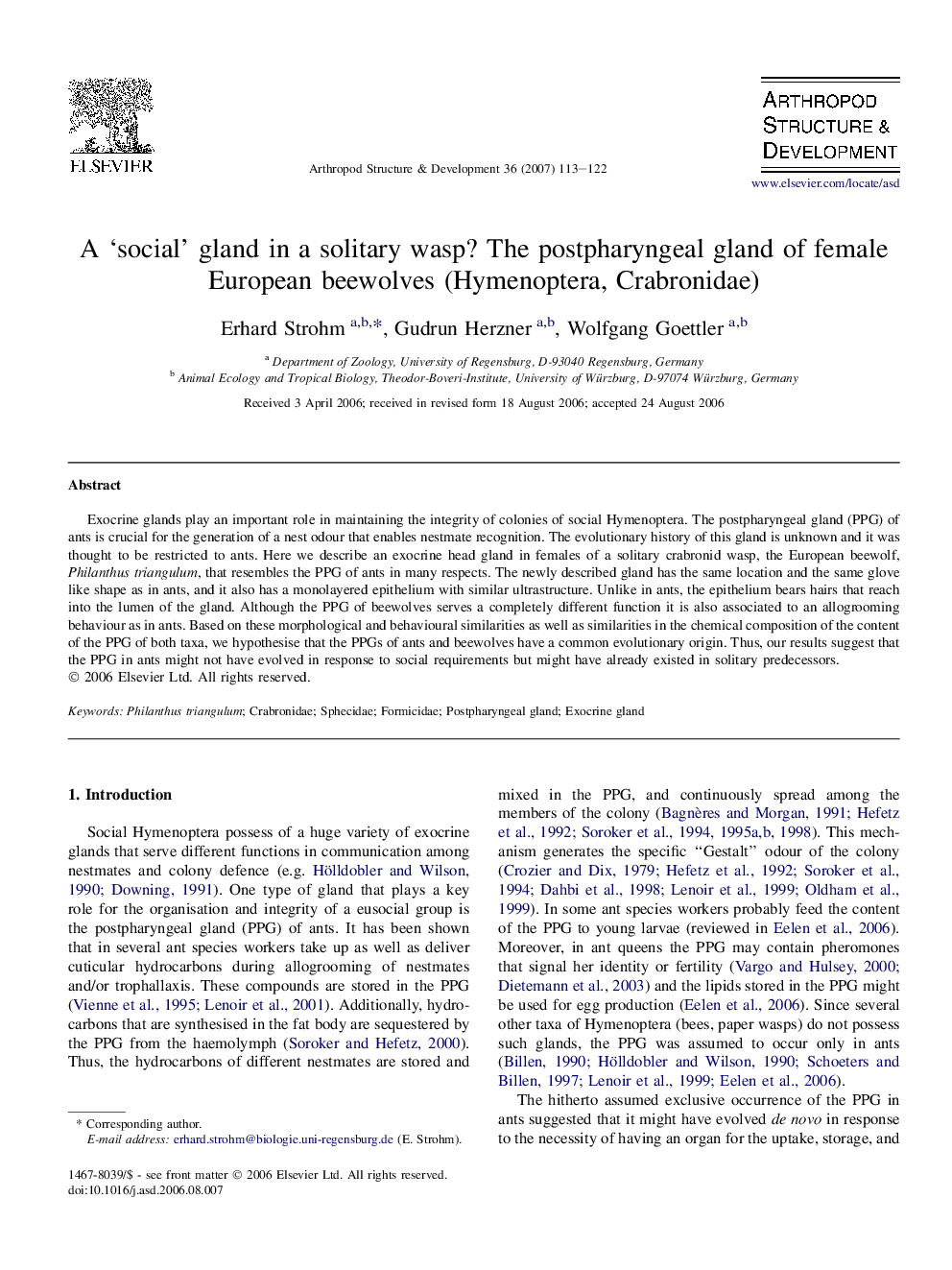| کد مقاله | کد نشریه | سال انتشار | مقاله انگلیسی | نسخه تمام متن |
|---|---|---|---|---|
| 2778988 | 1153188 | 2007 | 10 صفحه PDF | دانلود رایگان |

Exocrine glands play an important role in maintaining the integrity of colonies of social Hymenoptera. The postpharyngeal gland (PPG) of ants is crucial for the generation of a nest odour that enables nestmate recognition. The evolutionary history of this gland is unknown and it was thought to be restricted to ants. Here we describe an exocrine head gland in females of a solitary crabronid wasp, the European beewolf, Philanthus triangulum, that resembles the PPG of ants in many respects. The newly described gland has the same location and the same glove like shape as in ants, and it also has a monolayered epithelium with similar ultrastructure. Unlike in ants, the epithelium bears hairs that reach into the lumen of the gland. Although the PPG of beewolves serves a completely different function it is also associated to an allogrooming behaviour as in ants. Based on these morphological and behavioural similarities as well as similarities in the chemical composition of the content of the PPG of both taxa, we hypothesise that the PPGs of ants and beewolves have a common evolutionary origin. Thus, our results suggest that the PPG in ants might not have evolved in response to social requirements but might have already existed in solitary predecessors.
Journal: Arthropod Structure & Development - Volume 36, Issue 2, June 2007, Pages 113–122